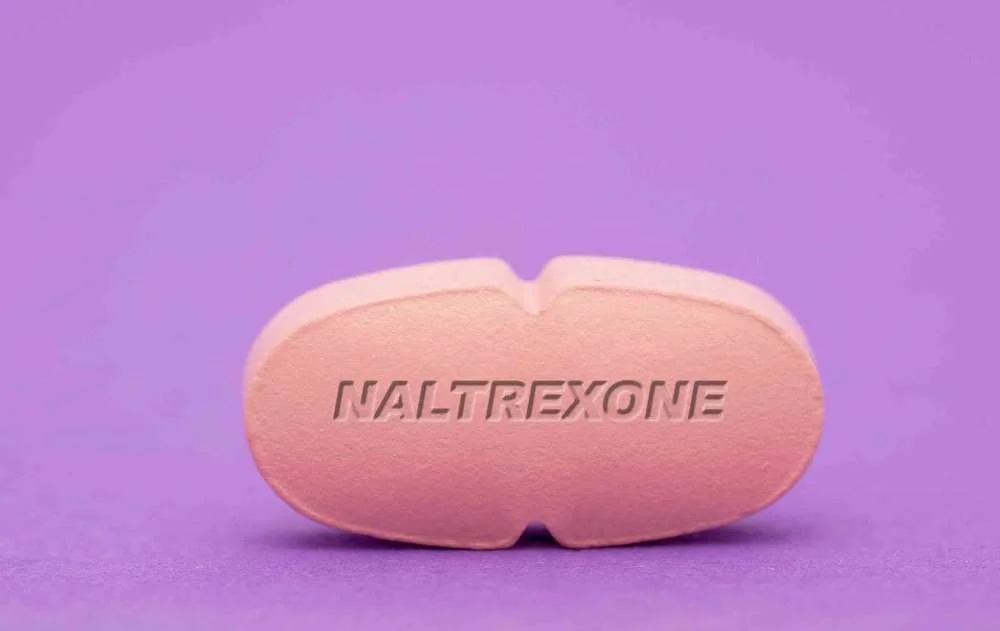According to the CDC, long COVID affects 1 in 13 adults in the U.S. (7.5%), with symptoms lasting over three months. As of July 2022, over 40% of U.S. adults had COVID-19, and 19% reported long COVID symptoms.
Though naltrexone is typically used to treat addiction to opioids or alcohol, preliminary research suggests that low-dose naltrexone (LDN) has potential in treating some symptoms of long COVID. If you or a loved one are suffering from long COVID symptoms, explore low-dose naltrexone as a potential treatment option. Always consult with a physician before starting new medications.
What Is Long COVID?
Most people who get COVID-19 experience only mild symptoms they can treat at home and make a full recovery within a couple of weeks. But some may face long COVID, an ongoing set of health problems—physical and/or mental—that can last for several months.
Post-COVID conditions may not affect everyone the same way. Patients might experience health problems from different types and combinations of symptoms over time. For some people, post-COVID conditions can last weeks, months, or years after COVID-19 illness and can sometimes result in disability.
Though most patients’ symptoms slowly improve with time, speaking with your healthcare provider about the symptoms you are experiencing could help identify new medical conditions.
Some of the most commonly reported post-COVID conditions are:
General symptoms:
- Tiredness or fatigue that interferes with daily life
- Symptoms that get worse after physical or mental effort (also known as “post-exertional malaise”)
- Fever
Respiratory and heart symptoms:
- Difficulty breathing or shortness of breath
- Cough
- Chest pain
- Fast-beating or pounding heart (also known as heart palpitations)
Neurological symptoms:
- Difficulty thinking or concentrating (sometimes referred to as “brain fog”)
- Headache
- Sleep problems
- Dizziness when you stand up (lightheadedness)
- Pins-and-needles feelings
- Change in smell or taste
- Depression or anxiety
Digestive symptoms:
- Diarrhea
- Stomach pain
Other symptoms:
- Joint or muscle pain
- Rash
- Changes in menstrual cycles
To date, care for people with long COVID has centered around multidisciplinary rehabilitation, self-care and self-pacing. CDC’s How Right Now campaign provides helpful tools for navigating conversations about the support someone with post-COVID conditions may need.
What is Naltrexone?

Intramuscular extended-release naltrexone is a medication approved by the Food and Drug Administration (FDA) to treat both Opioid Use Disorder (OUD) and Alcohol Use Disorder (AUD) as a Medication-Assisted Treatment (MAT) option. Naltrexone binds to the endorphin receptors in the body, and blocks the effects and feelings of alcohol. Naltrexone reduces alcohol cravings and the amount of alcohol consumed. After a patient stops drinking, taking naltrexone helps maintain their sobriety.
Naltrexone is not an opioid, is not addictive, and does not cause withdrawal symptoms when usage is stopped. Rather, naltrexone blocks the euphoric and sedative effects of opioids such as heroin, morphine, and codeine. Naltrexone binds and blocks opioid receptors, and reduces and suppresses opioid cravings. There is no abuse and diversion potential with naltrexone.
Though physicians previously prescribed naltrexone to treat opioid addictions, they now are employing LDN (low dose naltrexone) to aid patients with conditions ranging from pain and a dysfunctional immune system, to inflammation, cancer, and mental health issues. Low-dose naltrexone (LDN) has anti-inflammatory properties and has been used to treat conditions such as fibromyalgia, Crohn’s disease and multiple sclerosis.
Before starting treatment with low-dose naltrexone, patients should talk to their practitioner about any of the following situations that apply to them:
- Have liver problems or use illegal drugs
- Have hemophilia or other bleeding problems
- Have kidney problems or other medical conditions
- Are pregnant, plan to become pregnant, or are breastfeeding
- Currently taking any prescription or non-prescription medicines, vitamins, or herbal supplements
- Currently taking any opioid-containing medicines for pain, cough, colds, or diarrhea
- Currently being treated for an OUD or AUD
- Are allergic to naltrexone or any of the ingredients or the liquid used to mix the extended-release naltrexone
Low-Dose Naltrexone (LDN) For Long COVID Treatment
Emerging evidence supports low-dose naltrexone (LDN) as a potential treatment for long COVID.
Experts believe naltrexone mitigates the pro-inflammatory cytokine storm and reduces organ damage caused by Coronavirus infection. Similarly, a low-dose of naltrexone is effective in blocking ERK1/2 phosphorylation as well as disrupting the interaction between the coronavirus’s ACE2 receptor and receptor-binding domain (RBD). Consequently, healthcare providers are considering LDN as a viable treatment option for COVID-19 infection, alone or in combination with other medications, to alleviate long-term symptoms.
In a pilot study among 38 long COVID patients, individuals using LDN reported improved energy, less pain, better concentration, less insomnia, and overall recovery from COVID-19 after two months. Researcher published these findings in July 2022.
Long COVID Treatment at Holistic Healing Heart Center in Los Angeles
When patients’ test results indicate inflammation in the blood vessels or other signs of cardiovascular distress, the Holistic Healing Heart Center can offer preventative measures.
As part of the Holistic Healing Heart Center’s comprehensive approach to heart health, we offer:
- Multistage testing, treatment, lifestyle management and monitoring for post-COVID patients.
- EndoPAT testing for diagnosis – Endothelial cells ensure the body’s homeostasis (the equilibrium necessary for regular function), regulating inflammation, oxidative stress, and auto-immune disease.
- A personalized treatment plan using advanced diagnostic tools and innovative treatment protocols, ranging from holistic cardiology, primary care, and functional medicine, to nutrition and physical therapy.
Seeking Relief From COVID-Related Symptoms?
To address vascular inflammatory issues or prolonged symptoms potentially related to COVID-19 exposure, commonly experienced by ‘long-haulers’, take action now. Contact Holistic Healing Heart Center to schedule a consultation and evaluation with Dr. Cynthia Thaik.





